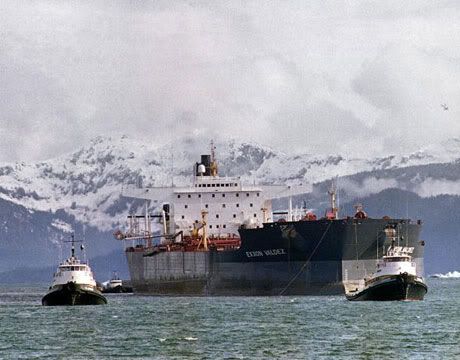by Jed LewisonYesterday, government scientists released their official estimate of the total amount of oil that leaked from BP's deepwater disaster: 4.9 million barrels, or 206 million gallons. Of that total, they estimated that about half had either been either contained, evaporated, or dissolved, that 24% had dispersed into tiny droplets in the ocean, and that 26% had either come ashore, been buried in sand, or remained in the Gulf as tar balls.
The New York Times reports that many people, particularly on the Gulf Coast, are concerned that these new estimates represent an attempt to whitewash the damage of the spill. But as the Times points out, these new estimates show that an enormous amount of oil -- twenty times more than spilled from the Exxon Valdez -- spilled into the Gulf.
By a process of elimination, the researchers concluded that only 26 percent of the oil had come ashore or was still in the water in a form that could, in principle, do additional shoreline damage. And much of that was breaking down quickly in the warm waters of the gulf, the report said.
Of course, that 26 percent equals more than 53 million gallons of oil, five times the size of the Exxon Valdez spill in Alaska.
"One way of looking at it is to say that 26 percent of the world’s largest oil spill is still out there," said Greg Butcher, director of bird conservation for the National Audubon Society. "And that is a lot of oil."
Let's assume for a moment that these estimates are accurate. If so, you'd be making a huge mistake to conclude that the spill wasn't a big deal because three-quarters of it never made landfall. First of all, about a third of the oil that didn't make landfall is still in the water column dispersed into tiny droplets, much of it mixed with dispersants. While much of that dispersed oil is likely to biodegrade, we still don't know what its long-term effects will be. As the report argues:
Even though the threat to shorelines, fish and wildlife, and ecosystems has decreased since the capping of the BP wellhead, federal scientists remain extremely concerned about the impact of the spill to the Gulf ecosystem. Fully understanding the impacts of this spill on wildlife, habitats, and natural resources in the Gulf region will take time and continued monitoring and research.
Even if we set aside the all the oil that didn't hit the shoreline or doesn't pose a threat to the shoreline, to say that "only" one-quarter of the oil impacted the shoreline would be a peculiar use of the world "only." After all, 25% of a big number is still a big number, and it's hard to see how anyone can look at that report and determine that it shows the BP oil spill was no big deal, especially coming so soon after the leak was finally capped.
It's important to remember that even if it ultimately turns out that the BP spill wasn't as bad as our worst fears, it would be a huge mistake to conclude that deepwater drilling is safe. The mere fact that we might consider ourselves "lucky" that only 53 million gallons of oil came ashore is testament to the inherent riskiness of deepwater drilling -- and the desperate need a new national energy policy to develop clean, secure, affordable, and renewable sources of power.
continued at Daily Kos...


![mollie's_pack[1]](http://farm3.static.flickr.com/2792/4497539696_63af0b29ef.jpg)

